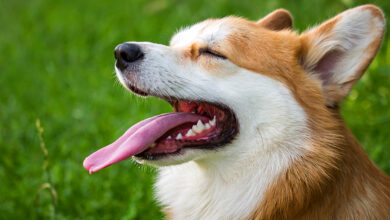Best strategies to keep pets cool
Editorial Feature

With the lifting of restrictions, it’s inevitable that we’re going to be out and about a little more – and that means, our pets will be too. However, it’s important to remember that with the sunshine, come dangers and risks to the health of our beloved pets. Checklist spoke to the RSPCA’s pet welfare expert, Dr Samantha Gaines, who told us:
“We’ve all experienced a very challenging time with the lockdowns, and as measures have eased it will be tempting during the hot weather this week for us to want to spend lots of time outside with our families and take our pets, but taking our dogs out with us for walks or to the park could really put them at risk of suffering heatstroke or exhaustion. It’s really important that we take extra special care of our pets and wildlife during this extremely hot weather.”
Dogs and horses need exercise, even when it’s hot. But the RSPCA says you should avoid exercising them in excessively hot weather. Experts advise walking or riding in the morning or evening when it’s cooler. When walking dogs keep in mind that pavements can get very hot in the warm weather – if it’s too hot to touch with your hand, then it’s too hot for a dog’s paws.
1. Never leave pets in hot vehicles

Never leave pets in vehicles, caravans, conservatories or outbuildings in the warm weather. Dogs, and other pets, can overheat and die if left in a hot environment, such as a car. Heatstroke is extremely dangerous for animals as it is for people and according to the British Veterinary Association, one in seven dogs affected by the condition dies as a result. Just don’t risk it. Don’t leave your pets in the car.
2. Check the heat of the floor
When walking dogs keep in mind that pavements can get very hot in the warm weather – if it’s too hot to touch with your hand, then it’s too hot for a dog’s paws.
3. Keep them cool!
When it’s hot at home and your pet is struggling to find somewhere cool, wrap an ice pack or frozen water bottle in a tea towel, or use damp towels for your them to lie on.
4. Stock up with sunblock!

Stock up with sunblock! Animals can get sunburnt too – and as in humans, sunburn can sometimes lead to skin cancer. Use animal-friendly sunblock or special SPF fabric clothing. Pink-pigmented skin burns easily – particularly areas around the nose, ears, tip of tail and stomach (particularly for sun-baskers!). Light-coloured pets are most at risk, are very short haired, or have any thin or bald patches of fur. Sunburn is typically very painful, causes skin damage and can sometimes lead to skin cancer. use pet-safe sun cream. Sunburn in pets looks just like sunburn in humans and you should look out for signs of redness, crusting, itching, flaking, blistering or pain. If your pet does burn, gently apply cold compresses to cool their pet’s skin, keep your pet out of sunlight and consult your vet.
5. Find shady spaces
Ensure animals have constant access to shade and fresh drinking water at all times. For animals that are kept outside, remember that as the sun moves during the day so too does the shade. Remember – somewhere that was shaded in the morning could be in full sun by the afternoon.
6. Make some cool snacks
Dogs enjoy a cool snack as much as the rest of us! Add ice cubes to your dog’s bowl, freeze their kong or for a real treat, make an ice lolly for your dog from pet-friendly ingredients! For inspiration, have a look at this RSPCA recipe for easy-to-make peanut butter treats Youtube.com
7. Hydrate your pets!

Keep guinea pigs cool and hydrated by making them a smorgasbord of crunchy, fresh vegetables.
8. Keep away the pests
When the sun arrives, so do the pests. Ticks and fleas carry diseases from typhus to Lyme disease and as with most things, prevention is better than cure. Make sure your pets are up to date with their flea and tick treatments and talk to your vet if you’re unsure. If your pet does pick up a tick, it’s important to remove them straight away. To avoid squeezing the body or leaving the head in, which will increase the chance of it passing diseases on, you’ll need to twist the tick off. This can be done using a tick removal tool, which can be picked up at pet shops or the vets. Your vet will be able to show you the best way to remove a tick by twisting. Do not try to burn them off or use lotion to suffocate, as this won’t stop the possibility of getting bacterial infections like Lyme disease, and risks causing injury
9. Get creative
Encourage pet chickens to stay in shaded areas by hanging up a homemade vegetable garland.
10. Splash around!

Fill a paddling pool or spray a hose for your dog to play in, but always supervise them around water.
To find out more, speak to your vet or check out the new RSPCA website all about Animal Welfare: rspca.org.uk/strategy
To see your company in any upcoming features we are arranging please email editorial@hurstmediacompany.co.uk






